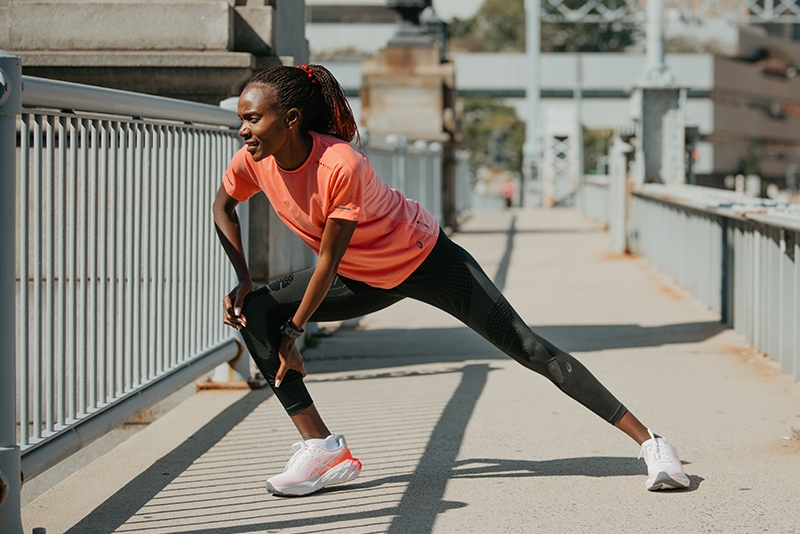Release Your Possible: Running Strategy Fundamentals for Peak Performance
Wiki Article
Dealing With Common Running Pains: Reasons, Solutions, and Prevention
As joggers, we frequently run into numerous pains that can hinder our efficiency and satisfaction of this physical activity. By exploring the root reasons for these operating discomforts, we can reveal targeted solutions and precautionary measures to make certain a smoother and much more satisfying running experience.Usual Running Discomfort: Shin Splints
Shin splints, a typical running pain, often result from overuse or incorrect shoes during physical task. The repeated tension on the shinbone and the tissues attaching the muscle mass to the bone leads to swelling and pain.To stop shin splints, individuals need to slowly raise the strength of their exercises, wear ideal shoes with appropriate arch support, and preserve versatility and toughness in the muscular tissues surrounding the shin. If shin splints do take place, first treatment includes rest, ice, compression, and altitude (RICE) In addition, including low-impact tasks like swimming or cycling can help preserve cardio fitness while enabling the shins to recover. Relentless or extreme instances might need medical assessment and physical therapy for efficient monitoring.
Usual Running Discomfort: IT Band Syndrome
Along with shin splints, an additional widespread running pain that professional athletes usually run into is IT Band Disorder, a problem brought on by swelling of the iliotibial band that leaves the outer thigh and knee. IT Band Syndrome commonly manifests as pain outside of the knee, especially during tasks like running or cycling. The iliotibial band is a thick band of fascia that attaches the hip to the shin, and when it becomes swollen or limited, it can rub versus the upper leg bone, resulting in discomfort and discomfort.Joggers experiencing IT Band Syndrome may discover a stinging or hurting feeling on the external knee, which can worsen with ongoing task. Variables such as overuse, muscle mass discrepancies, inappropriate running type, or poor workout can add to the development of this problem.
Usual Running Pain: Plantar Fasciitis

Plantar Fasciitis can be attributed to different elements such as overtraining, inappropriate shoes, running on hard surface areas, or having high arcs or level feet. To avoid and alleviate Plantar Fasciitis, joggers can integrate extending workouts for the calves and plantar fascia, wear helpful footwear, maintain a healthy weight to decrease strain on the feet, and gradually increase running intensity to stay clear of unexpected stress on the plantar fascia. If signs continue, it is suggested to consult a medical care specialist for proper medical diagnosis and therapy alternatives to deal with the problem effectively.
Usual Running Discomfort: Jogger's Knee
After dealing with the difficulties of Plantar Fasciitis, one more prevalent problem that runners usually encounter is Runner's Knee, a common running discomfort that can impede sports efficiency and trigger pain throughout physical task. Runner's Knee, also called patellofemoral discomfort disorder, manifests as discomfort around or behind the kneecap. This condition is frequently credited to overuse, muscle mass discrepancies, improper running techniques, or issues with the placement of the kneecap. Runners experiencing this discomfort may really feel a dull, hurting discomfort while running, going up or down staircases, or after prolonged periods of sitting. To stop Jogger's Knee, it is vital to include proper workout and cool-down regimens, keep strong and balanced leg muscles, put on appropriate footwear, and progressively enhance running strength. If signs and symptoms persist, inquiring from a medical care expert or a sports medicine expert is recommended to identify the underlying reason and create a customized therapy plan to minimize the discomfort and prevent additional difficulties.Typical Running Pain: Achilles Tendonitis
Generally afflicting runners, Achilles Tendonitis is an agonizing condition that impacts the Achilles tendon, creating discomfort and prospective limitations in exercise. The Achilles ligament is a thick band of cells that attaches the calf muscular tissues to the heel bone, important for activities like running, jumping, and strolling - this web-site. Achilles Tendonitis frequently develops due to overuse, incorrect footwear, insufficient extending, or abrupt boosts in physical taskSigns And Symptoms of Achilles Tendonitis consist of discomfort and rigidity along the tendon, especially in the early morning or after durations of inactivity, swelling that aggravates with activity, and potentially bone stimulates in chronic cases. To stop Achilles Tendonitis, it is necessary to extend appropriately before and after running, use proper footwear with correct assistance, gradually increase the intensity of exercise, More hints and cross-train to minimize recurring stress and anxiety on the tendon. Treatment might entail rest, ice, compression, altitude (RICE procedure), physical treatment, orthotics, and in severe situations, surgical procedure. Early intervention and appropriate care are important for managing Achilles Tendonitis efficiently and preventing lasting problems.
Conclusion

Report this wiki page